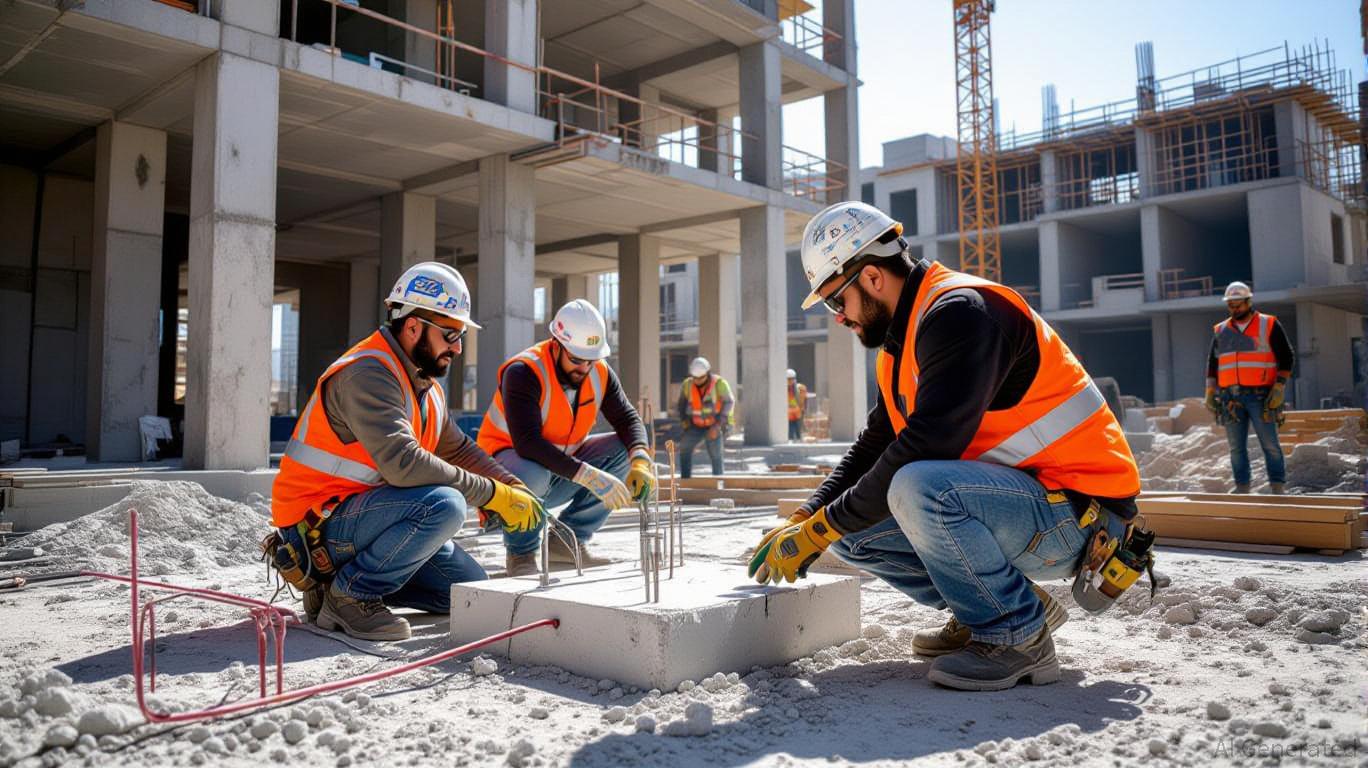Iran’s geographic location at the collision zone of the Arabian and Eurasian tectonic plates has made it one of the most seismically active regions in the world. Over the past year, the country has experienced a series of earthquakes, including a 5.1 magnitude tremor near Semnan in June 2025, compounding concerns about the vulnerability of its infrastructure. For investors, this raises a critical question: How can capital be deployed in Iran’s construction and insurance sectors to mitigate seismic risks while capitalizing on long-term growth?
 The Construction Sector: A Shift Toward Resilience
The Construction Sector: A Shift Toward Resilience
Iran’s construction sector is undergoing a strategic transformation to address seismic vulnerabilities, driven by both policy reforms and technological innovation. The 2025–2026 national budget allocates $114.6 billion to infrastructure, with a focus on rail, port, and housing projects. This funding reflects a recognition that traditional construction methods are insufficient to withstand the country’s frequent earthquakes.
Key innovations include the adoption of seismic-resistant materials (e.g., reinforced concrete and base-isolation systems) and the retrofitting of critical infrastructure, such as oil refineries and nuclear facilities. Academic research suggests that retrofitting projects can generate returns through tax incentives tied to avoided losses from production disruptions. For example, a probabilistic framework developed by Iranian economists estimates that every $1 invested in seismic retrofitting could yield $3–$5 in long-term savings from reduced damage.
The residential construction segment is particularly promising. With 70% of Iranians owning homes, demand for seismic-resistant housing is surging. The government’s Mehr Housing Project, despite its challenges, has spurred the development of affordable, resilient housing. Investors in modular construction, AI-driven risk modeling, and geospatial analytics for disaster mitigation could find a growing market in Iran.
The Insurance Market: Bridging the Risk Gap
Iran’s insurance sector, however, remains underprepared for the scale of seismic threats. A 2025 study revealed that current earthquake insurance premiums in Iran are five times lower than those modeled using probabilistic risk assessment tools like the Global Earthquake Model (GEM). This underpricing creates a systemic risk: insurers may lack the capital to cover losses from large-scale earthquakes, which could destabilize the broader economy.
The government’s planned Iran Building Catastrophe Insurance Pool (IBCIP) aims to address this gap by offering national coverage for residential buildings. While this initiative expands the insurance market, it also exposes domestic insurers to unprecedented risks. For instance, the IBCIP could require insurers to underwrite policies for millions of homes in high-risk zones, a scenario that demands robust risk modeling and solvency planning.
International benchmarks, such as the EU’s Solvency II framework, highlight the inadequacy of Iran’s current solvency capital requirements. Under the existing system, solvency capital is calculated based on historical premiums and losses, ignoring the probabilistic nature of seismic events. A hypothetical analysis of a 100,000-home portfolio found that risk-based solvency capital requirements under Solvency II would be three times higher than those under Iran’s current framework.
Investment Opportunities and Risks
For investors, the intersection of seismic risk and infrastructure development in Iran presents both opportunities and challenges:
Construction Sector Opportunities: Seismic-resistant housing and retrofitting projects, supported by government incentives. Rail and port infrastructure modernization, which enhances trade resilience. AI and geospatial analytics for disaster mitigation, driven by partnerships with NGOs like the IOM.
Risks:
Political instability and sanctions could disrupt funding for large-scale projects. Underdeveloped supply chains for advanced construction materials may delay implementation.
Insurance Sector
Opportunities: The IBCIP’s launch could expand insurance penetration from 2% to over 20% of the population. Adoption of risk-based pricing models, which align with global standards and attract foreign capital. Risks: Insufficient capital reserves may leave insurers vulnerable to catastrophic losses. Regulatory uncertainty could delay the adoption of advanced risk modeling practices. Strategic Recommendations for Investors
To navigate these complexities, investors should adopt a dual strategy that balances resilience and growth:
Prioritize Resilient Infrastructure: Invest in construction firms specializing in seismic-resistant technologies, such as base-isolation systems and modular housing.
Partner with local governments to fund retrofitting projects, leveraging tax incentives for risk mitigation.
Support Insurance Market Reforms:
Back insurers adopting probabilistic risk models and risk-based solvency frameworks.
Advocate for the integration of international standards (e.g., Solvency II) to enhance market credibility.
Diversify Geographically:
Focus on regions with lower seismic risk, such as southern Iran, while hedging against high-risk zones. Invest in hybrid projects that combine infrastructure development with insurance-linked solutions. Conclusion
Iran’s seismic challenges are not insurmountable but require a reimagining of infrastructure and insurance strategies. For investors, the key lies in aligning capital with resilience-driven innovations and risk-based frameworks. While the road ahead is fraught with uncertainties—political, geological, and economic—the potential rewards for those who navigate it wisely are substantial. In a world where climate change and geopolitical tensions amplify natural and man-made risks, Iran’s construction and insurance sectors offer a compelling case study in the art of investing for resilience.
